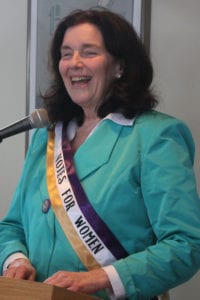He’s cold and he wants to go home.
He has to go to the bathroom and he can’t stand here another minute.
He’s way too hot under all that equipment and he wants to go swim somewhere.
Yes, these are just some of the sinister motives often attributed to umpires, referees or officials at games, as coaches and parents try to explain a call that they clearly saw the other way.
Yet if you ask most of the parents on the other team, including those who seem like eminently reasonable people, they would tell you that they thought the umpire made the right call.
Here we are again, with Little League baseball underway and with championship T-shirts, sweatshirts and trophies at stake.
Standing between the starting point for all those teams and the ultimate glory are the other teams, the weather which forces endless makeup games, huge parties that take half the team from a scheduled game and, of course, the umpires.
I have tremendous sympathy for those umpires because I was one decades ago. No, I didn’t call Derek Jeter out or ring up Alex Rodriguez. My brother and I signed up to umpire Little League games.
In several games, batter after batter would get into a full count. Invariably the hitter would take a pitch that was somewhere between the outside corner and just outside. With every eye on the field staring at me, I had to make a difficult choice.
Yes, of course, there is a strike zone, and in the strike zone is a strike and outside the zone is a ball, but what if the ball is squeezing along the edge of the plate, near the bottom of the strike zone?
I aimed for consistency, but I also became involved in “make good” calls. I’d call a borderline strike a ball on the first batter, disappointing the pitcher and catcher, and then I’d call the next borderline strike a strike, deflating the hitter and his teammates.
Numerous pitches were so close that I knew the groans would come even before my arm signaled for the hitter to go to first or return to the bench.
Once, before a game, a coach came up to me and told me that he was a bit of a hothead and that I should feel free to eject him from the game. Too bad I didn’t have the foresight then to ask him what he was doing coaching 8-year-olds in the first place if he felt the need to argue calls.
Sure enough, in the second inning, he screamed at me for a called strike. After I ejected him, he winked at me as if we had each played our defined roles. His players tried not to snicker as they watched him leave the field for what I understand was one of many such dismissals.
Nowadays, people complain about officiating in professional sports constantly, especially with endless video replays from angles no individual referee could possibly have at the same time, much less an umpire on a hot, dry baseball field.
I recognize that we live in a society where we have a right to express ourselves, but we also have a responsibility to accept the rule of law. Like it or not, the umpires on the field establish and enforce those rules.
Maybe, as we push our lawn chairs into the cars on our way to another game, we should remember that the umpire isn’t out to get anyone. The official is just trying to do his or her best to make sure both teams have an equal opportunity to succeed.










 QUESTION: I recently signed a health care proxy naming my daughter to make health care decisions for me. Is she able to access my medical records and speak to Medicare and my supplemental health insurance company?
QUESTION: I recently signed a health care proxy naming my daughter to make health care decisions for me. Is she able to access my medical records and speak to Medicare and my supplemental health insurance company?










